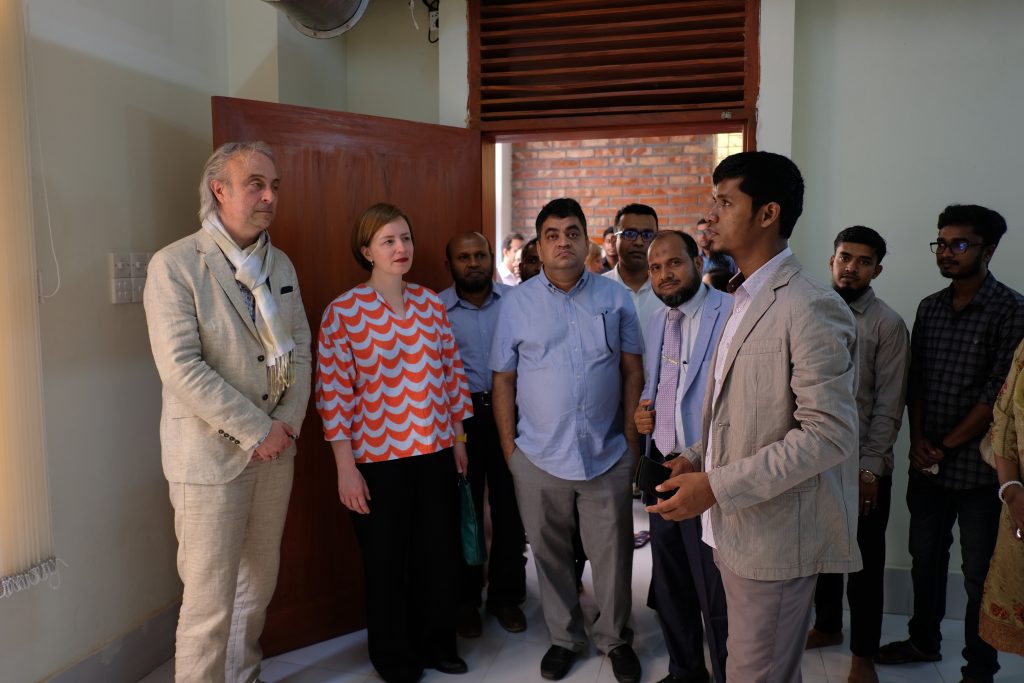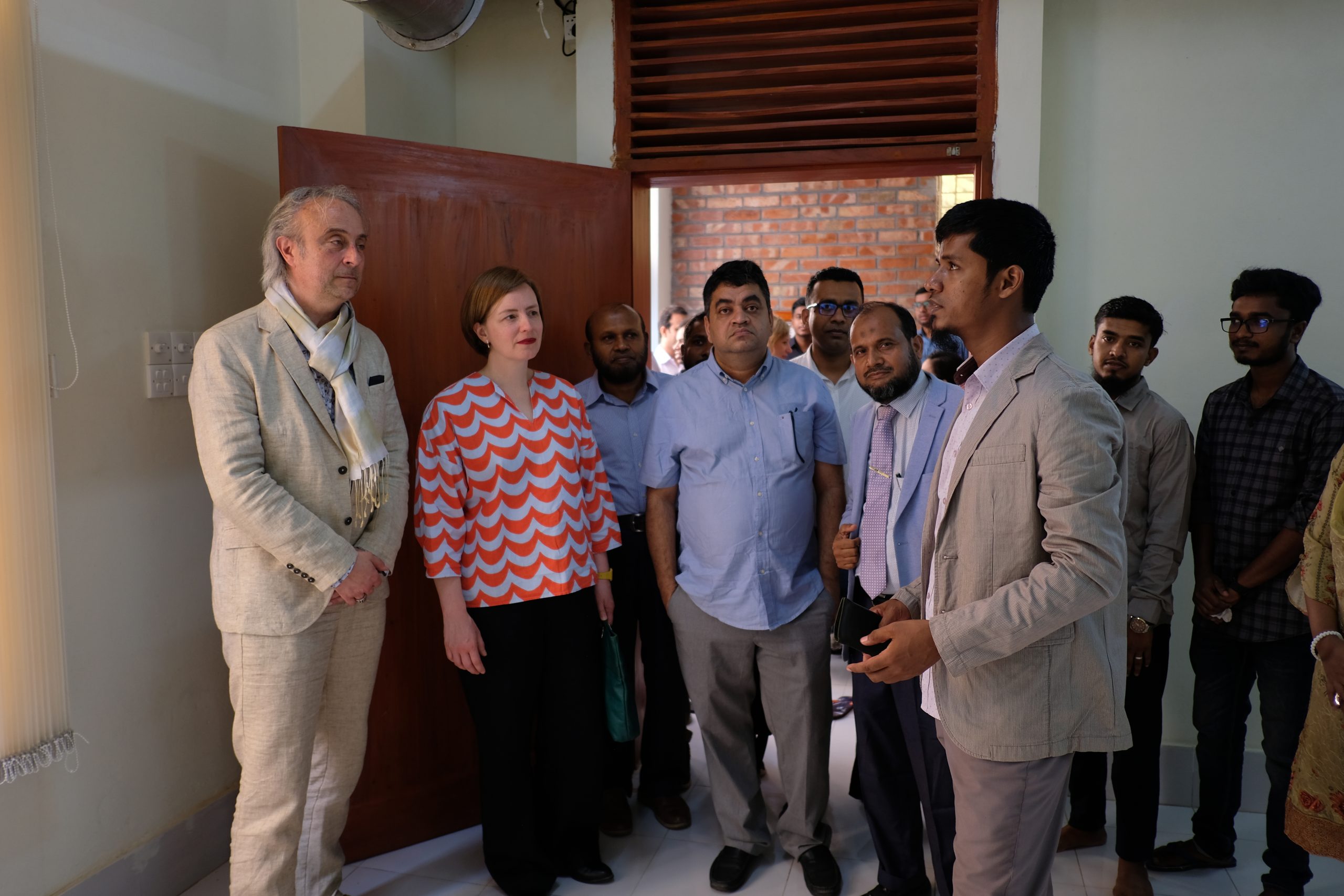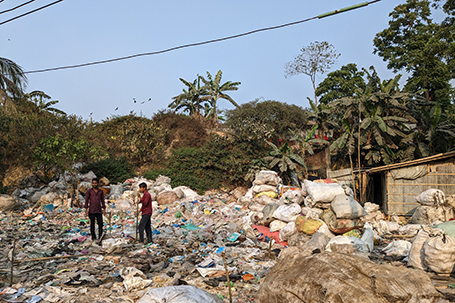The SCIP Plastics project had the honor of welcoming special guest Pro-Vice Chancellor Dr. Ulrike Kuch of Bauhaus-Universität Weimar to the Board of Directors meeting on April 27th at KUET. Dr. Kuch, Pro Vice-Chancellor of Social Transformation, accepted the invitation for a two weeks visit to Bangladesh. Her stay included visits to Chattogram, Khulna, and Dhaka, where she participated in various meetings and events.
In Chattogram, Dr. Kuch participated in a Knowledge Sharing Campaign with Chief Guest Prof. Dr. Mohammad Rafiqul Alam, Vice Chancellor of CUET, and engaged in discussions with the private recycling industry and the Chattogram Port Authority. In Khulna, she met with KUET officials focusing on the universities’ intentions of joint cooperation and exchange. In addition, she visited the Knowledge Transfer Hub and Waste Lab facilities on campus.
Her visit highlighted the challenges of plastic waste management and the efforts municipalities are taking to overcome the rising plastic waste production. With extensive insights, Dr. Kuch finally attended a strategic discussion on social transformation at the UGC to strengthen collaboration between the two countries in the field of education.






